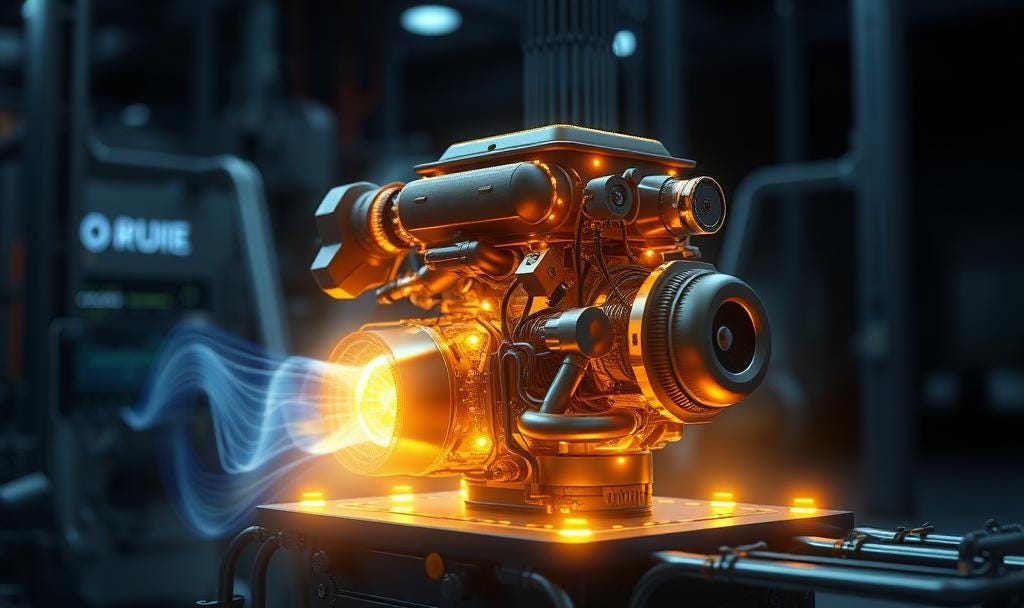AI Engineering: Your Agentic System Is a Performance Engine, Not Just Fancy Parts
How Integrated AI Design Powers Real Business Value—Lessons from Car Engineering
Imagine trying to win a race with just high-performance parts scattered around the garage. You wouldn’t. Yet, so many organizations “collect” AI components—LLMs, agents, RAG, fine-tuning, vector stores—without building a unified system. True AI engineering is like designing a highly tuned performance engine: not just assembling the parts, but ensuring each layer connects, runs reliably, and serves your business destination.
Why Fancy Parts Don’t Win the Race
AI components on their own are impressive, but real performance comes when everything works together—engine, transmission, fuel system, dashboard, tuning shop. If you chase every new tech (MCP, RAG, fine-tuning), you’re just stockpiling shiny tools. Recipe for wasted investment, not business momentum.
The Layers of the Agentic Performance Engine
1. Engine (LLM – Your Powerhouse)
Description:
The LLM is the engine block—translating business questions into powerful outputs. Choosing the right size and type determines efficiency and agility.
Example:
A financial services firm uses a powerful LLM to generate market reports.
Anti-pattern:
Deploying a small, generic model for compliance documentation—leading to mistakes and regulatory risk.
2. Controls (Prompts – Driver’s Interface)
Description:
Prompts act as the steering wheel and pedals—directing the engine’s response. Treat prompts with discipline: versioning, testing, and registry are essential to avoid accidental misfires.
Example:
Helpdesk chatbot prompts are versioned and tested, so customers always get consistent, accurate assistance.
Anti-pattern:
Launching new scripts on the fly, causing unpredictable user experiences and security gaps.
3. Transmission & Turbo (RAG & Fine-Tuning)
Description:
RAG (Transmission): Delivers up-to-date, external facts to the engine for precise answers.
Fine-Tuning (Turbo): Trains the engine for special driving conditions, enhancing tone or task expertise.
Example:
AI assistant uses RAG to serve real-time HR policies; clinical app fine-tuned for medical conversations.
Anti-pattern:
RAG connected to unreliable sources, spoiling recommendations; fine-tuning on too little data, resulting in erratic behavior.
4. Fuel System (Data Foundation)
Description:
The fuel system sources, cleans, and delivers the right data for optimal performance. Data pipelines must be robust and unified for consistent quality.
Example:
Retail AI integrates stock levels, recent sales, and weather.
Anti-pattern:
Fragmented, manual, or poor-quality data pipelines slow the engine and cause errors.
5. Dashboard Memory (State Layer)
Description:
A dashboard tracks context, history, and preferences, letting the system remember each user’s journey and adjust for smoother rides.
Example:
Sales AI recalls customer history, preferences, and previous issues for tailored support.
Anti-pattern:
No effective memory—forcing users to repeat themselves, degrading the AI’s value.
6. Instrument Panel (Observability & Evals)
Description:
This layer monitors the engine’s health with real-time gauges, alerts, and automated tests. It’s your diagnostic system to prevent silent failures.
Example:
Observability tools trigger alerts for response anomalies and user complaints so solutions are proactive.
Anti-pattern:
“Blind driving” with limited monitoring, missing major issues until they cause business damage.
7. Tuning Shop (Cost, Latency & Accuracy Balancing)
Description:
True performance means balancing speed (latency), power (accuracy), and efficiency (cost). Solution architects regularly review and tune these tradeoffs.
Example:
Logistics AI balances cost of compute, fast route calculations, and prediction accuracy for deliveries.
Anti-pattern:
Over-focusing on accuracy, deploying overly expensive models where faster, cheaper models would achieve “good enough” outcomes.
Summary: Build for the Road, Not the Garage
AI engineering is a multi-layered system, not a pile of separate parts.
Anti-patterns—untested prompts, poor data, careless fine-tuning—lead to breakdowns, wasted investment, or business risk.
Success comes from engineering each layer and continuously tuning the engine for your business journey.
Action Steps for Data and AI Leaders
Define the business outcomes as your destination.
Choose and configure the right Engine (LLM) for the journey.
Engineer Controls (prompts) with versioning and rigorous testing.
Employ Transmission (RAG) and Turbo (fine-tuning) judiciously.
Build a clean, unified Fuel System (data pipeline).
Enable Dashboard Memory for truly personalized experiences.
Monitor with Instrument Panels and tune for performance.
Anecdote:
A retail company upgraded its AI engine but skipped prompt registry and ignored data quality. The result? Misfires, slow service, and customer frustration. Only after integrating all the layers—memory, monitoring, prompt discipline—did the business rev up to success.
Stop chasing shiny tech. Tune and drive your agentic system like a performance engine—where every part works together, accelerating business results beyond the hype.



